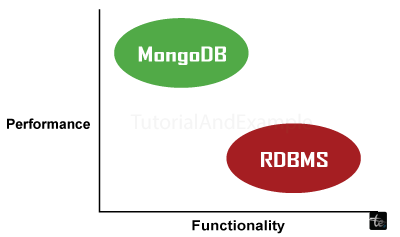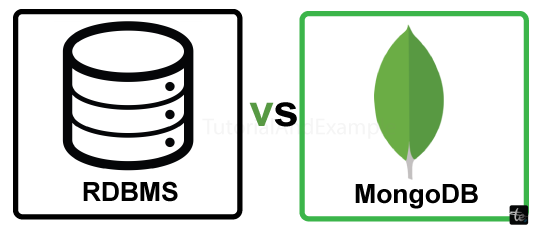Difference between RDBMS and MongoDB
Introduction
RDBMS, short for Relational Database Management System, employs tables to store data in a structured format. It ensures various levels of data security. Each table typically includes a primary key for unique record identification and may optionally feature foreign keys to establish relationships between tables. SQL is the standard query language for RDBMS databases, with popular examples being MySQL, Oracle, and SQL Server.
In contrast, MongoDB represents a type of NoSQL database. It operates on a document-oriented model and relies on binary JSON or BSON for data storage. MongoDB does not employ SQL for querying; instead, it stores data as documents, offering a versatile data model and support for distributed servers. Additionally, MongoDB is open-source in nature.
Comparing the performance of MongoDB with RDBMS

The choice between MongoDB and RDBMS depends on the particular requirements of your application, and the performance comparison between the two is context-dependent. Large-scale, unstructured data scenarios with a high read volume are ideal for MongoDB, which excels at horizontal scalability and high availability.
RDBMSs are ideal for applications requiring precise data integrity and intricate transactions because of their structured data model and ACID characteristics. Developers must carefully consider the type of data they have, the expected read/write workload, and their scalability and high availability needs when choosing between MongoDB and RDBMS.
Query patterns and indexing techniques should also be considered to maximize the performance of either database management system. A thorough performance comparison between MongoDB and RDBMS may be found here.
High availability and scalability
MongoDB: MongoDB offers exceptional scalability, allowing data to be distributed across multiple servers through horizontal scaling. This capability ensures that applications can effortlessly handle growing data volumes and high traffic while maintaining optimal performance. Scaling up by adding more servers to the cluster is seamless, ensuring smooth expansion as data needs increase.
Furthermore, MongoDB's built-in high availability is provided through replica sets. These sets consist of multiple MongoDB instances that maintain identical data copies. In the event of a primary node failure, replica sets automatically switch over, ensuring uninterrupted data availability and enhancing fault tolerance.
RDBMS: RDBMS has historically relied on vertical scaling to enhance a single server's hardware resources to increase performance. Although vertical scaling can help with performance to some degree, it might not be able to handle very big datasets or achieve real horizontal scalability.
Regarding high availability, RDBMS is easier to adopt than MongoDB because it doesn't always involve the implementation of failover settings or third-party clustering solutions.
Indexing
MongoDB: MongoDB supports single-field, compound, multi-key, and geographic indexes, among other index types. Properly indexing collections can greatly improve query performance, particularly in workloads with high reading content. For sophisticated aggregate queries to be efficiently executed, MongoDB's indexing capabilities are essential.
RDBMS: RDBMSs enable developers to build indexes on particular columns, which speeds up query processing. RDBMS indexes can improve select query performance, particularly when filtering and merging data from several tables.
Difference between RDBMS and MongoDB

| Key | RDBMS | MongoDB |
| Concept | RDBMSs operate on relational databases and are a type of relational database management system. | MongoDB is a document-oriented database management system that operates on document-based databases and is non-relational. |
| Hierarchical | It is challenging to store historical data. | It has built-in capability for storing historical data. |
| Expandability | RDBMSs can scale vertically. As RAM is increased, performance improves. | MongoDB is horizontally scalable. As more processors are added, it performs better. |
| Schemes | Before using a database, an RDBMS requires the definition of a schema. | In MongoDB, schema can be defined and accessed dynamically. |
| SQL Injection | Susceptible to an attack using SQL Injection. | It is impossible to do SQL injection. |
| Basis | Database uses rows. | Document is used by Database |
| Base | Database makes use of Column. | Field is used by databases. |
| Achievement | Processing huge hierarchical data takes longer using RDBMS. | Large hierarchical data sets are processed incredibly quickly by MongoDB. |
| Joints | Robust joins are supported by RDBMS. | Complex joins are not supported by MongoDB. |
| JavaScript Client | RDBMS do not offer clients based on JavaScript for database queries. | A Javascript-based client for database queries is offered by MongoDB. |
| Language of QuerySQL | It is used by RDBMSs to query databases. | MongoDB queries databases uses BSON. |
Conclusion
Developers and companies need to consider a number of factors, including the type of data they have, how much read/write work they anticipate doing, and how scalable and highly available they need to be when choosing between MongoDB and RDBMS. Query patterns and indexing techniques should also be considered in order to maximize the performance of either database management system.